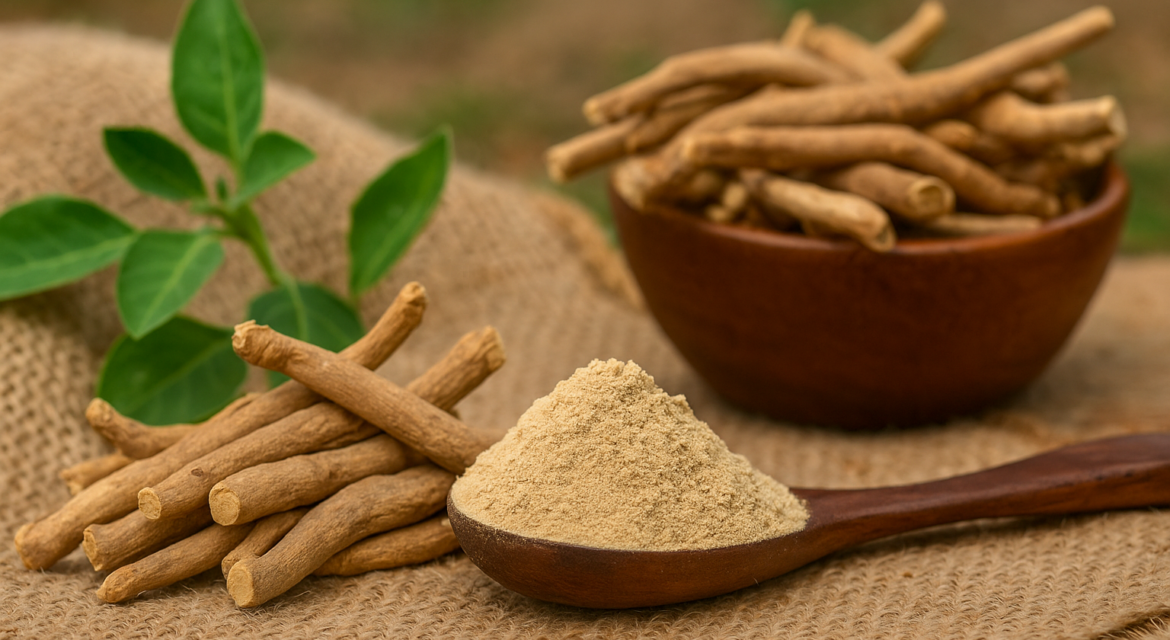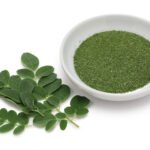 15 July 2025
15 July 2025How Ashwagandha Powder Is Made: Farm to Spoon Journey
Ashwagandha, often called the “Indian Ginseng,” is one of the most revered herbs in Ayurveda. But have you ever wondered how the humble root transforms into the fine powder you add to your smoothies or bedtime milk? The journey of Ashwagandha powder is fascinating — it involves careful farming, patient harvesting, and gentle processing, all to preserve its incredible healing properties. Let’s walk through the step-by-step journey of how Ashwagandha root powder is made, right from the farm to your spoon.
1. Selecting the Right Land and Seeds
The first step begins with choosing land rich in sandy loam soil, good drainage, and minimal chemical exposure. Ashwagandha thrives best in dry, slightly alkaline soils with moderate fertility. At Sukhi Farm, seeds are selected from healthy, mature plants known for their potency, ensuring that the new plants inherit strong genetics and medicinal qualities.
Farmers often sow the seeds at the beginning of the monsoon season. This timing ensures enough natural moisture for germination without the risk of waterlogging, which can harm the young plants.
2. Growing the Ashwagandha Plant
Once the seeds sprout, the plants are nurtured organically, with minimal interference. Ashwagandha is naturally hardy and drought-resistant, but careful attention is still given to ensure healthy growth. Farmers avoid chemical fertilizers and pesticides, relying instead on:
- Organic compost to nourish the soil.
- Natural pest management practices like neem oil spray and companion planting.
Ashwagandha takes about 150–180 days to mature. During this time, the plants grow into small shrubs, with stout roots — the main part used for powder production — digging deep into the earth.
3. Harvesting at the Right Time
Harvesting is a critical step. It usually takes place when the plants start to dry out and the leaves turn yellow, indicating full maturity. Timing is essential because harvesting too early or too late can affect the concentration of active compounds like withanolides, the core reason behind Ashwagandha’s therapeutic power.
Farmers carefully uproot the plants, ensuring the roots are intact. Damaged roots can lead to contamination or reduced potency, so gentle handling is key.
4. Washing and Cleaning the Roots
After harvesting, the roots are immediately separated from the aerial parts (stems and leaves). They are then washed thoroughly to remove all soil, dirt, and impurities. This step is vital to maintain hygiene and purity.
At Sukhi Farm, we use clean water and natural scrubbing methods to preserve the root’s outer layers, where many of the beneficial compounds reside. No chemical washing agents are used, ensuring that the roots remain as natural as possible.
5. Drying the Roots
Proper drying is essential to prevent mold and retain the medicinal properties. The washed roots are spread out under shaded areas where they dry slowly over several days. Shade drying is preferred because direct sunlight can degrade sensitive nutrients and reduce the root’s potency.
The roots are monitored regularly during drying to ensure no moisture is trapped, which could spoil the batch.
6. Grinding into Powder
Once fully dried, the roots become brittle and are ready for grinding. In traditional methods, the roots were pounded manually. Today, hygienic mechanical grinders are used, but the focus remains on gentle grinding at low temperatures to preserve the root’s nutrients.
The dried roots are ground into a fine powder, without adding any preservatives, fillers, or artificial colors. This natural powder retains the earthy aroma and slightly bitter taste that authentic Ashwagandha powder is known for.
7. Quality Testing
Before the powder is packaged, it undergoes several quality checks:
- Purity Testing: To ensure no foreign materials or contaminants are present.
- Nutrient Analysis: To verify the content of active compounds like withanolides.
- Microbial Testing: To make sure the powder is safe for consumption.
This rigorous testing guarantees that only the highest-quality Ashwagandha powder reaches your spoon.
8. Packaging and Storage
Finally, the Ashwagandha powder is packed in airtight, eco-friendly containers to protect it from moisture, light, and air. At Sukhi Farm, we prioritize sustainable packaging that not only keeps the powder fresh but also minimizes environmental impact.
Proper storage at home is equally important. It’s best to keep the powder in a cool, dry place, away from direct sunlight, to maintain its freshness and efficacy for longer periods.
Final Thoughts
From a tiny seed sown in fertile soil to a nutrient-rich powder in your kitchen, the journey of Ashwagandha is a story of patience, care, and respect for nature. At every step, traditional wisdom and modern hygiene practices come together to ensure that the Ashwagandha you consume is pure, potent, and true to its Ayurvedic roots.





